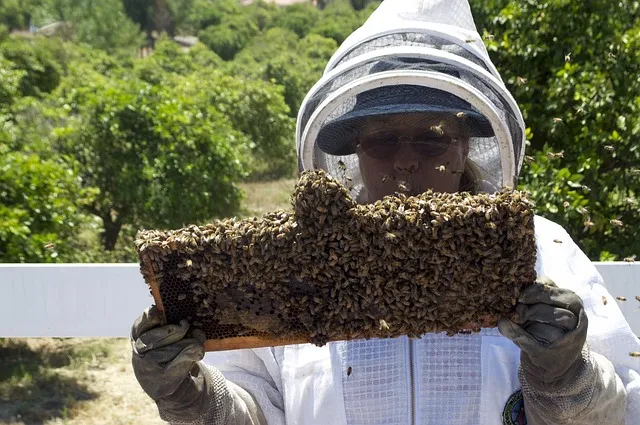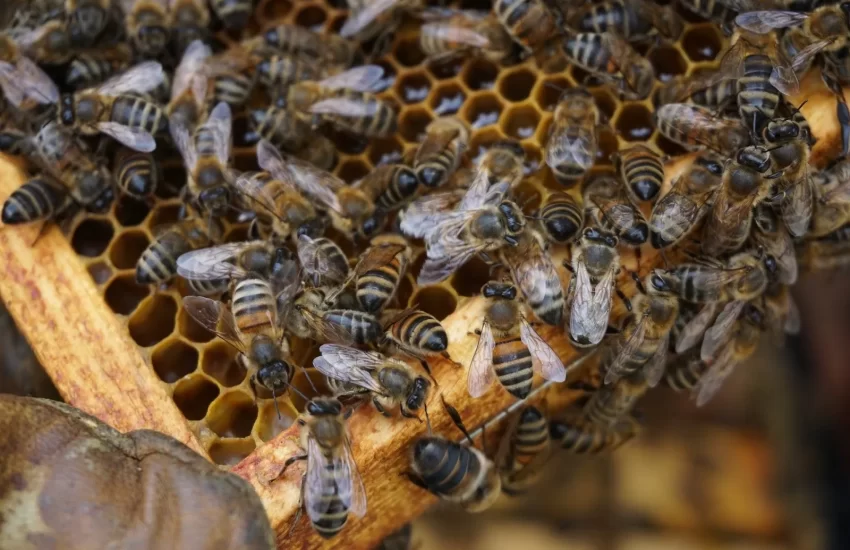Can a bee nuc survive the winter?
A nuc is a small, portable colony (3 to 5 frames) housed in a nuc box. It consists of all stages of honey bee development, food, enough workers to cover the combs, and a laying queen. When a nuc is placed in a full-sized hive body and provided with supplemental feeding if necessary, it bursts into a strong colony.
A colony that starts with a nuc has faster colony development than a package due to the presence of brood and food. If during the time of its creation, a beekeeper did not introduce a queen, the bees can use the available eggs to create a queen. Beekeepers should familiarize themselves with nuc creation since it is a resource in beekeeping. Nucs are more costly than bee packages.
Similar Articles you may like to read –
How do you keep moisture out of a beehive in the winter?
How do you winterize a beehive?
Can bees survive without sugar water?
How many bees should be in a hive for winter? How many brood boxes do you need for winter?
Can a bee nuc survive the winter?
Nucs can survive winter even in extremely cold regions. They require fewer honey reserves than full-size colonies. Overwintered nucs can be used in early spring to replace the colonies that died out in winter. They can also be added in weak colonies to increase the numbers, especially in spring.
Overwintered nucs are pricier than packages and non-wintered nucs and usually explode in population in spring to become productive full-size colonies. A nuc started in august( fall) has ample time to build the population. In fact, they make the strongest colonies in spring if adequately managed. In areas with abundant flowers, they require less feeding.
What are the requirements of overwintering nuc?
A Productive Queen
Young queens usually lay exceptionally well. Consider replacing poor queens because they will most probably die.
Abundant Sealed Food
A nuc requires stored pollen and honey. It should have enough food stores to last throughout the winter.
A Healthy Colony
You should treat your nuc against varroa mites. A nucleus sourced from a diseased-infested colony will inherit the problems of the parent colony.
Frames Covered with Bees
A poorly populated nuc will struggle to keep warm. In winter, honey bees cluster together with the queen at the center to stay warm.
More articles you may like to read –
Are bees active at night?
What kills honey bees?
Do Bees Like The Full Sun?
Do Bees Fly In The Rain? Where Do Bees Go When It Rains?
What are the benefits of over-wintered nucs?
Correct the Queen Issue
Queen losses contribute to the mortality of a colony. This can be caused by injury, diseases, or failure of the colony to replace a failing queen. A beekeeper can combine the queenless colony with a nuc to correct the problem. This process is easy since the queen already contains an accepted queen.
Boosting Unproductive/ Weak Colonies
You can directly install a nucleus in a weak or undersized colony. This combination is beneficial, especially when bees are busy foraging during a nectar flow.
Replacing Dead Colonies
Many colonies fail in winter. Beekeepers can repopulate the hives by introducing nucs.
A source of Income
Unutilized nucleus colonies can be sold to other beekeepers, creating an additional source of income. It is vital to ensure they are free from diseases or parasites.
Where do beekeepers create nucs from?
Beekeepers usually source nucs from strong, thriving hives. A hive that is on the verge of swarming is an exceptional choice. By removing part of the brood, food stores, and bees from the hive, the urge to swarm dies out. A weak hive that is performing poorly can also create a nuc. A beekeeper should contact queen suppliers early to get queens on time.



